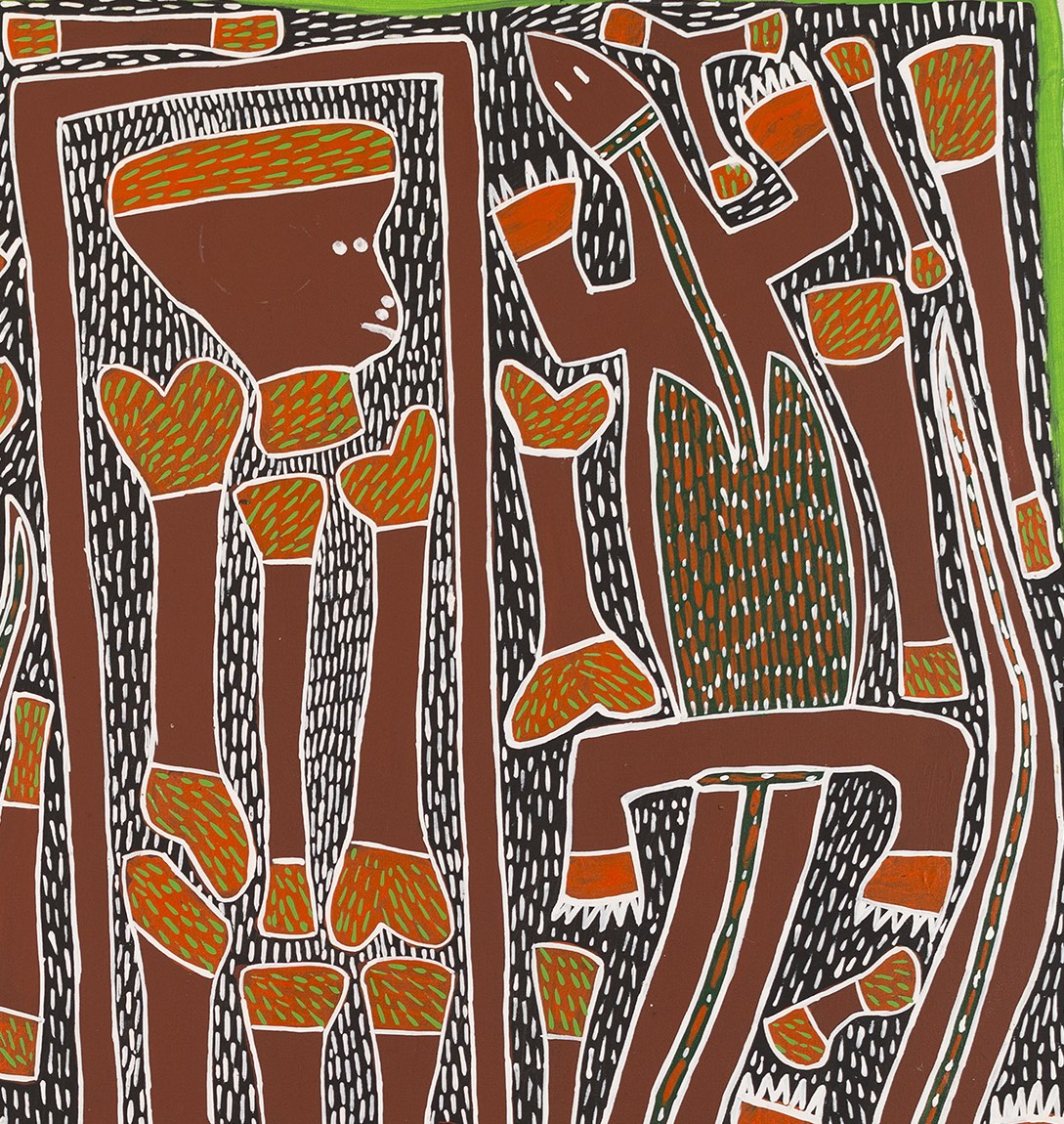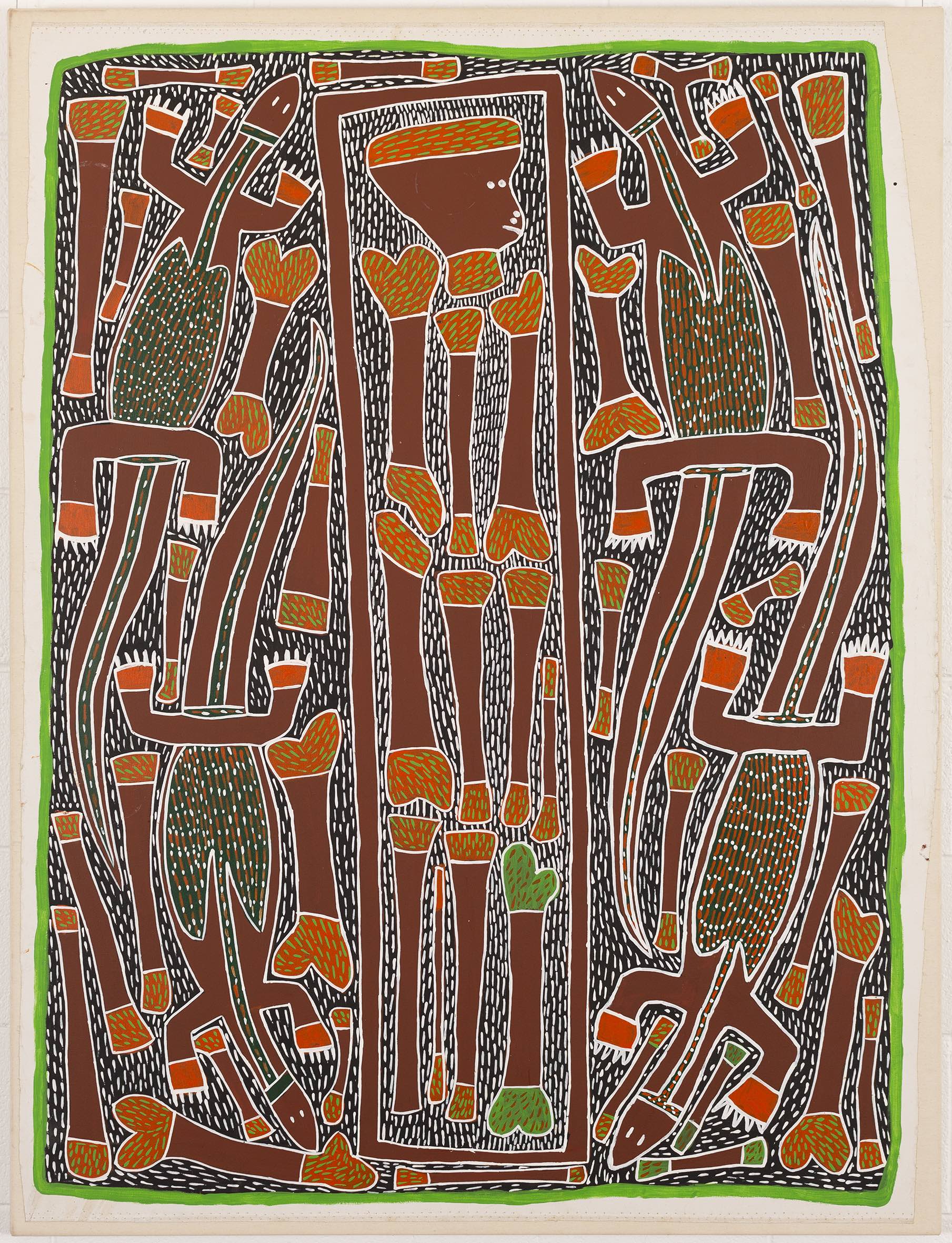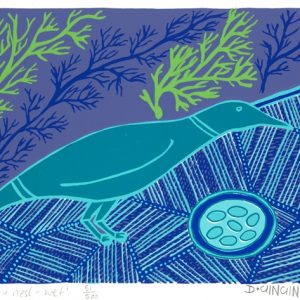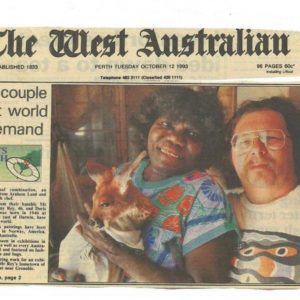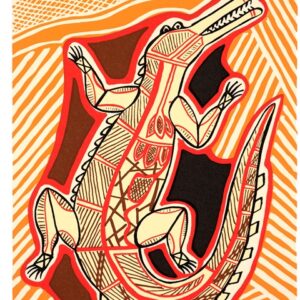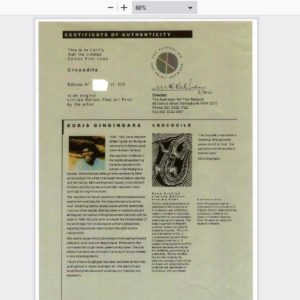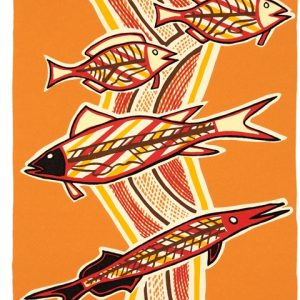Description
- Medium: Acrylic on cotton canvas, stretched
- Size: 80 x 130 cm
- Artist skin name: Wamud
- Lived: C1946 – 2005
- Language group: Wagilak
- Community: Yugul Mangl (Ngukurr)- Roper River
Djambu Barra Barra
Djambu was born around 1946 in Wagilak country near Nilipidgi on the Walker River. He was raised in the Wagilak community without communication with the modern Western world, a unique upbringing compared to the other Ngukurr artists who grew up in contact with Europeans. Barra Barra moved out of the Wagilak community after his entire family was killed. He began traveling throughout Arnhem land, where he learned more about his culture – specifically certain rituals, ceremonies, and stories. Throughout his travels, he learned about a variety of Arnhem land art styles and ceremonial painting in different clans. He was able to carry this information with him and disseminate it when he settled down in Ngukurr, a Northern Territory in Australia.
Here, he met and married his wife, Amy Johnson. Barra Barra integrated himself into the Ngukurr community through his extensive knowledge of Aboriginal ceremonies and culture. He eventually became the initiation and funeral director in Ngukurr due to his knowledge of ceremonies and Wagilak upbringing (the Wagilak clan played a role in purification ceremonies at funerals at Ngukurr).
Barra Barra, along with artist Ginger Riley Manduwalawala took part in a printmaking course at Ngukurr Arts in 1986. Barra Barra and Manduwalawala decided that they wanted to focus on painting, and took to applying screen printing ink directly onto curtain material with brushes. This course helped to develop Barra Barra’s techniques and begin his road to being an established artist. The artists’ works centred around their expressive use of colour and their knack for innovation. Specifically, these Ngukurr artists became known for their use of acrylic paint on canvas. This traditionally Western medium of art allowed for the group’s art to stand out amongst other Aboriginal artists. Barra Barra headed this experimentation as he explored techniques for producing art while drawing on his multitude of influences from the many different tribes of Arnhem land.The result was a striking combination of tradition and innovation making Barra Barra a famously, unique artist in his field.
Barra Barra’s early works tended to be physically massive and demonstrated obvious confidence in the subject matter. His early work, Crocodile Story (1987) was featured in the 4th National Aboriginal Art Award held at the Museum and Art Gallery of the Northern Territory. About the work, Barra Barra said, “The crocodile has creative thoughts, like humans. He knows how heavy the floods will be. He builds a very clever nest. His eyes are no longer eyes. They are fire”.
He was best known for his use of bright, bold colours and traditional designs, even being recorded asking for “fluoro colours” in 1987. He was also able to render rarrk —a traditional cross-hatching design—in acrylic paint. His compositions were typically dense and dominated by large figurative forms. His style often also saw symmetrical and circular backgrounds which draw attention to the central figures—especially in depictions of ceremonies. Many of his paintings are in the figurative tradition, and feature ancestral beings and mortuary scenes, as well as iterations of both his and his mother’s dreamings (kangaroo, crocodile).
Ref: https://en.wikipedia.org/wiki/Djambu_Barra_Barra
Ngukurr
Djambu Barra Barra was one of the first contemporary artists to emerge from South East Arnhem Land at Ngukurr, situated on the banks of the Roper River.
Ngukurr [Nook-koor], ‘a place of many stones’ is today an Aboriginal community of about 800 people from nine different language groups, many of whom are displaced from their ancestral countries. Originally an early 1900s Anglican mission, Ngukurr provided a haven for the Roper River peoples fleeing the violence of pastoralists moving up from the south. People of many different clans and language groups congregated there, including the Alawa, Mara, Ngalakan, Ngandi, Nunggubuyu, Rittarrngu and Wandarang clans. This history is reflected in the subject matters and diversity of styles of the Ngukurr artists’ paintings. Ngukurr artists are famous for exploring new painting styles and techniques and recontextualising them to become something wholly unique.
The first canvases from Ngukurr date back to March 1987 from painters such Ginger Riley Munduwalawala, Djambu Barra Barra and Amy Jirwulurr Johnson.
The early artists of Ngukurr were enterprising and painted for the Ngukurr Art Centre as well as other individuals and enterprises in the community.
Provenance: this artwork is from the collection of Anne Phelan and John Clark of Framed Gallery in Darwin 1983-2017. Framed Gallery held exhibitions of artworks by Djambu and his wife Amy.

